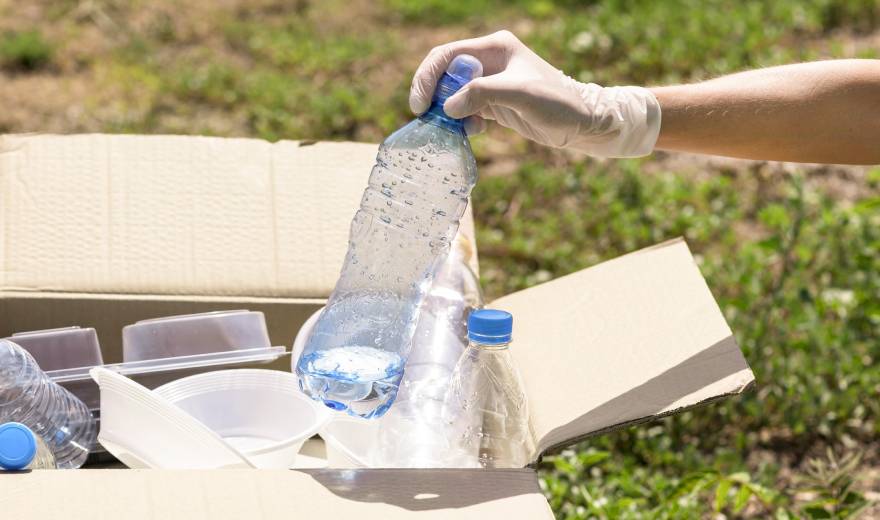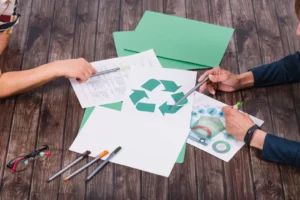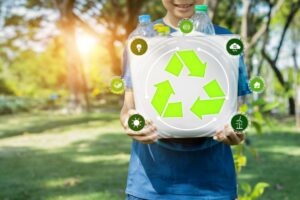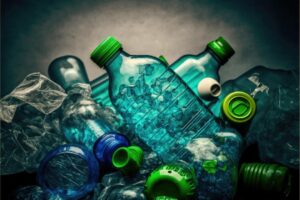As the saying goes, ‘one man’s trash is another man’s treasure,’ same is the case with plastics.
Recycling is an essential step towards sustainability and reducing environmental pollution. Plastic materials are notorious for their non-biodegradable properties, which makes them a significant contributor to landfills and oceanic waste.
While some plastics can be recycled with absolute ease, others need to go through complex processes which makes it challenging & costly. In this article, we’ll explore some of the most common plastic materials and how they fare in the recycling process.
Understanding Plastic Recycling
Recycling plastic is important to reduce the amount of waste in our environment. It’s a process that can save energy, reduce greenhouse gas emissions and help conserve natural resources.
Some plastics are easier to recycle than others since they require less processing and have more value as recycled material. Knowing which type of plastic is easiest to recycle can make a big difference in how we approach recycling efforts. So let’s dive into understanding plastic recycling and discover what makes certain types of plastic easier to recycle than others.
The Different Types Of Plastic
There are different types of plastics which can be categorized based on the chemical composition and properties.
Polyethylene terephthalate (PET) or #1 plastic is the most widely recycled plastic material because it has a high demand in various industries such as textile, packaging, and automotive.
High-density polyethylene (HDPE) or #2 plastic is also easy to recycle due to its durability and strength.
However, PVC (#3), low-density polyethylene (LDPE) (#4), and polypropylene (PP) (#5) plastics are challenging to recycle due to their complex chemical structures that require specialized techniques for processing.
Polystyrene (#6) and other mixed plastics fall under the category of hard-to-recycle materials as they are often contaminated with food residues or other impurities which make them almost impossible to reuse without compromising quality.
Understanding the different types of plastic will help us become more mindful when disposing of these materials and encourage us to choose products made from easily recyclable plastics whenever possible.
Properties Of Easy-To-Recycle Plastics
Recycling is like a puzzle, and some plastics are just easier to fit into the right spot. The properties that make certain plastics easy-to-recycle include their ability to be melted down without losing quality or strength, their lack of contamination from other materials, and their popularity in consumer products.
Polyethylene terephthalate (PET) found in water bottles and high-density polyethylene (HDPE) used for milk jugs are two examples of plastic materials that are widely accepted by recycling facilities due to their ease of processing. Additionally, these plastics have a high demand for use in recycled goods such as clothing fibers or new containers.
As we continue the search for more sustainable practices, focusing on the recyclability of our everyday items can lead us towards a cleaner future.
What Are the Environmental Benefits Of Recycling?
Recycling has a significant impact on the environment, and choosing plastics that are easy to recycle can make a big difference.
Some of the easiest plastic materials to recycle include polyethylene terephthalate (PET), high-density polyethylene (HDPE), and low-density polyethylene (LDPE). These plastics are commonly used in products such as water bottles, milk jugs, and grocery bags.
By recycling these materials instead of throwing them away, we can reduce greenhouse gas emissions, conserve natural resources, and prevent pollution. Besides, recycling also helps to create jobs in the recycling industry and reduces our dependence on landfills for waste disposal.
Tips For Proper Plastic Disposal
As we have learned about the environmental benefits of recycling, it is important to also understand how to properly dispose of plastic materials.
One way to make plastic disposal easier is by choosing the right types of plastics that are easiest to recycle. PET (Polyethylene Terephthalate) and HDPE (High-Density Polyethylene) are two common types of plastics that can be recycled easily and frequently used in packaging for food and beverages.
Other recyclable plastics include PVC (Polyvinyl Chloride), LDPE (Low-density polyethylene), PP (Polypropylene), and PS (Polystyrene). By selecting these easy-to-recycle materials, we can help reduce waste and preserve our environment for future generations while creating new products from old ones without burdening natural resources or polluting landfills with non-biodegradable wastes.
Conclusion
While some plastics are easier to recycle than others, it’s important to understand their properties and how they can be properly disposed of.
By choosing easy-to-recycle plastics like PETE or HDPE, we can not only help reduce pollution but also save energy and resources by avoiding the need for virgin materials.
Let’s all do our part by taking simple steps such as separating recyclable plastics from non-recyclable ones and disposing of them correctly.







